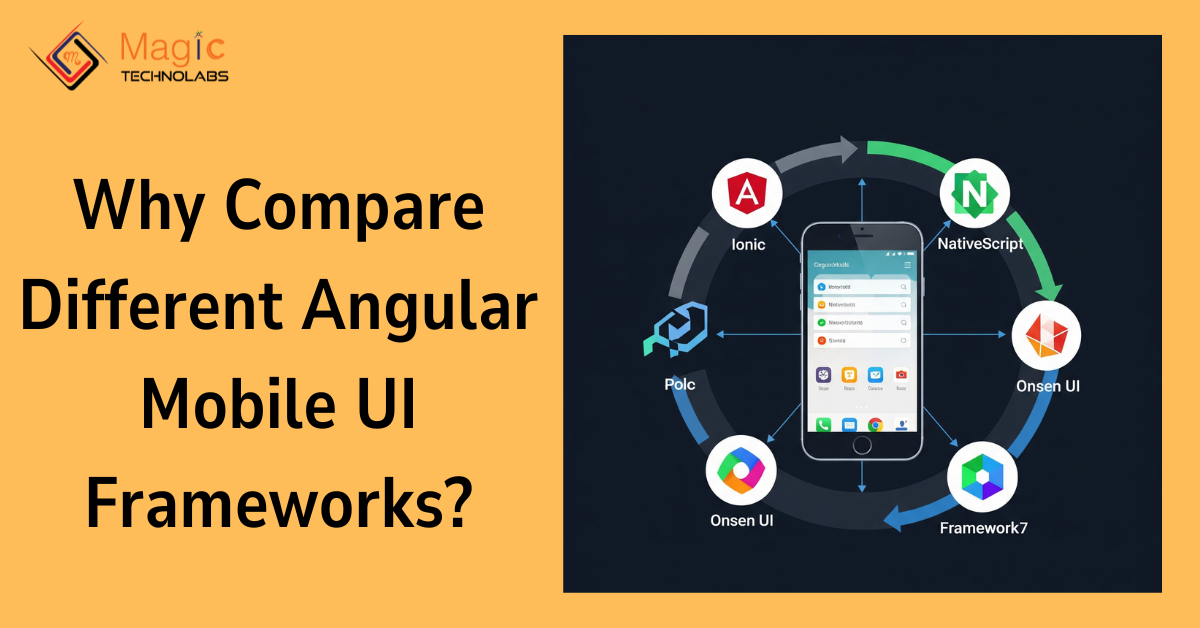In the mobile-first era, consumers are used to having access to sleek and intuitive interfaces, fast speed, and easy functionality in the apps that they use. Angular is great framework that helps you to build your next mobile app.
But then the question is:
So, which Angular mobile UI framework is better?
Spoiler alert: not every framework in UI is made equal.
This is the case since, once you pick the wrong one, there is a possibility that you will need to spend hours (or days) trying to fix bugs, sluggish components, and problems associated with incompatibility. Why should you compare Angular mobile UI frameworks? And how doing it will help you save time and money, and eliminate stress? Read this blog and find out.
What are UI Frameworks in Indicators of Angular Mobile?
An Angular mobile user interface library is where all the user interface elements, styles, and behavior are ready-made to support a mobile experience. Rather than creating applications on their own, programmers can take these libraries and:
Accelerate growth
Be sensitive and compatible
Enhance the levels of UI/UX consistency
Popular Angular frameworks that align with UI include Ionic, Framework7, NativeScript, Onsen UI, and so on.
What are some ofonsonteto more reasons to compare that by before you make the decision?
Each project is unique- which is why following the impulse of going blindly with a UI library will be economically costly. This is why it is a good idea to compare the options:
1. Performance Optimization
















